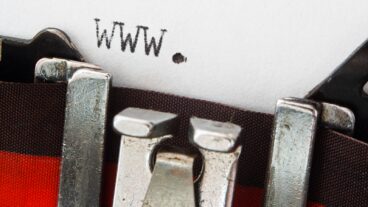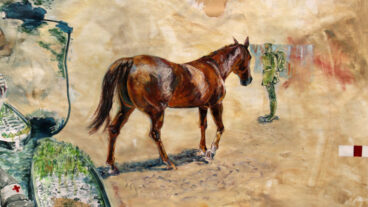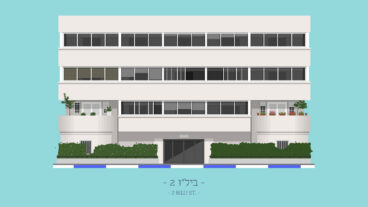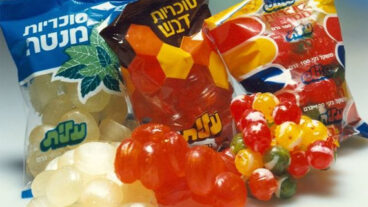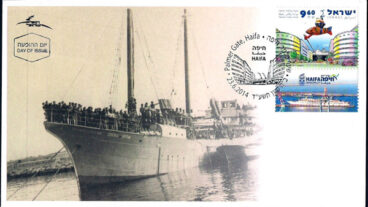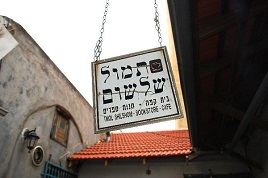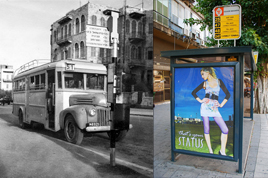 We are in a cleaning frenzy! Not just me. The whole country is getting scrubbed fresh and ready for Passover.
We are in a cleaning frenzy! Not just me. The whole country is getting scrubbed fresh and ready for Passover.
In days gone by, the lady of the house — unsurprisingly, most house-cleaning in Israel was and is done by women — would “raise the house”, literally upending all furniture and more or less flooding the house so as to do a proper sponja.
Ah, sponja! How to explain the concept? To the outside observer, doing sponja may seem like taking a sopping wet rag, flinging it over a sponjador — a giant squeegee on a stick — and then flinging it madly back and forth across the endless surface of 20 cm by 20 cm balatot.
But no. Doing a proper sponja is what separates the men from the boys — surprisingly, many Israeli men take great pride in their sponja technique — knowing just how much to wring out the rag on the first pass, how to wrap it around the squeegee so that it doesn’t fall off, and of course, how to wipe the floor on the last pass so as to leave no streaks.
Sponja is so much a part of being Israeli that no one has ever thought seriously to change this system, generally considered the only way to get floors really clean, far superior to new-fangled methods like mops, Swiffers and Dyson vacuum cleaners (now advertising heavily in time for the holiday).
Of course, all of this would be meaningless without the holiest of holy waters, the apex of all that is clean, that which burns your nasal passages and lungs, and leaves you feeling that you’ve truly sacrificed yourself on the altar of hygiene: economica, known to the outside world as bleach.
Economica is a cult – either you’re in or you’re out. If you’re in, you can’t go to bed at night without a few splashes in the sink, the tub, the shower, the whatever — just to kill off the germs that must be lurking there. And if you’re out, you think your spouse is crazy. But I’m not. Really. Just a few more splashes. Please.
Before cream cleansers, bathroom cleanser was commonly known as cleaning sand — and with good reason, too. Not only did it leave scratch up ceramic finishes on bathtubs and sinks, it also left one’s hands red and raw, or truly clean, as pain and cleanliness must go hand in hand.
Before there was liquid dish soap, there was the old fashioned dish soap paste with the consistency — and bouquet — of axle grease. A few handfuls would be glopped into a dish and cut with water to make it usable. Later on, special dispenser were invented to accommodate this unwieldy activity. And bizarrely enough, some people still prefer the paste to the liquid, out of a feeling that it has more cleaning action.
A small consumer awareness note: Those people are apparently right! A quick look at a Ministry of Finance chart on cleaning products shows that the paste has 20% active ingredients while most liquids contain between 18-24% active ingredient. I bear a personal grudge against Palmolive, which used to contain 36% active ingredient and now contains a mere 18%.
Back to cleaning! Before Persil, before Tide, before even Sano, there was Soad (or Sod, as it was written then). For some reason, in Israel it is the laundry soaps that traditionally had the best mascots: the Textil Shampo boy, the Or boy and my personal favorite, the Ama lady. As I’ve written before, she owes a great deal to Betty Boop, and in fact, could be Betty Boop — if Betty Boop were born in Poland, came over to pre-State Israel in the 1930s, got married and lived in Givatayim.
And if she did live out that life, don’t you think she’d be in the midst of “raising the house” right now?! Enough dilly-dallying! Back to cleaning! Pessach is almost here!
Picture of sponja is from Ben Gurion University of the Negev. Ama and Or images courtesy of the wonderful and highly recommended Nostal.co.il






